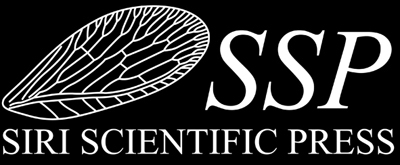News — New research
A new ORDER of insects: Alienoptera
Posted by David Penney on
The new order of insects: Alienoptera, has just been proposed in a paper due to be published in the journal Gondwana Research. The paper was made available online on 4 March as an accepted manuscript in press, but has not yet been formatted to the standard journal style. Ming Bai, Rolf Georg Beutel, Klaus-Dieter Klass, Weiwei Zhang, Xingke Yang, Benjamin Wipfler 2016. †Alienoptera – a new insect order in the roach - mantodean twilight zone. Gondwana Research, doi:10.1016/j.gr.2016.02.002 (where the full paper can be downloaded for $35.95) The new order has been erected based on a single (almost complete) male...
- 2 comments
- Tags: New research, News
16 million-year-old poisonous plant fossilized in amber
Posted by David Penney on
The discovery of the first-ever fossil specimens of an “asterid” flowering plant was published yesterday in the journal Nature Plants. The perfectly preserved fossilised flowers were found in 16 million-year-old Dominican amber and belong to the genus Strychnos, which ultimately gave rise to some of the world’s most famous poisons, such as strychnine and curare. 16 million-year-old Strychnos flower in Dominican amber Researcher George Poinar, Jr., a courtesy professor in the College of Science at Oregon State University, said, “Species of the genus Strychnos are almost all toxic in some way. Each plant has its own alkaloids with varying effects....
- 0 comment
- Tags: New research, News
What is a species and can we really define it?
Posted by David Penney on
Yesterday, October 5th, was a landmark day in terms of animal taxonomy (the science of naming naming species), because the first ever new insect species to be described and named, based solely on photographs of the organism concerned, was published in the journal ZooKeys. However, it is causing plenty of controversy. The new species Marleyimyia xylocopae from Ndumo Game Preserve, South Africa The traditional approach to naming new species (fossil or extant) requires that a 'type specimen' be deposited in a museum collection in order to serve as a physical reference point for future purposes. In the current study no...
- 2 comments
- Tags: New research, News
New Fossil Scorpion 290 Million-Years-Old Sheds Important Light on their Evolutionary History
Posted by David Penney on
Scorpion fossils are possibly more diverse than you might expect. 128 fossil species are currently recognized, with some dating back as far as the Silurian period. They occur in various different rock types and also, more rarely, as inclusions in amber. Fossil scorpion from the Cretaceous Crato Formation, Brazil A new discovery, representing the first complete scorpions from the Permian period, has just been announced at a conference held in Germany. The fossils originate from a recently excavated locality in Chemnitz, Germany. It appears that explosive volcanism preserved the remarkable specimens in situ as part of the palaeosol and bedrock...
- 0 comment
- Tags: Monograph series, New research, News
The new Alfred Russel Wallace unit of measure
Posted by David Penney on
Alfred Russel Wallace (1823-1913), the nineteenth century British naturalist, has many claims to fame. To mention just two, he is often referred to as the the “father of biogeography” and came up with the idea of evolution through natural selection independently and concurrently with Charles Darwin (he co-authored the paper with Darwin in 1858). Alfred Russel Wallace ca. 1895 Unfortunately, his great accomplishments are often overshadowed compared to Charles Darwin, though this has been rectified to some degree through numerous recent events and books to mark the centenary of his death in 2013. Sculpture of Alfred Russel Wallace in the...
- 0 comment
- Tags: New research, News
